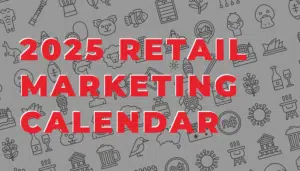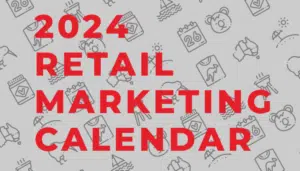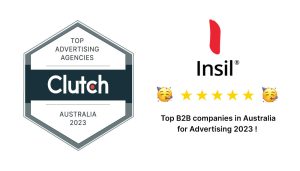Marketing: What to Expect in 2020
Marketing is a living, breathing (and sometimes shouting) entity that is constantly growing and changing.
If you want your business name out there and getting a positive response, then it is likely that you need some sort of marketing to help with this. But because the field is always changing, you can’t just find one process or platform and stick with it for the next ten years, even if it was working for brilliantly in the beginning.
We recently wrote a blog on what to expect on the digital marketing landscape in 2020, which touched briefly on a few things to watch out for.
Here we will explore a bit further, looking deeper into the bigger trends in digital marketing that you need to be across, as well as touching on some offline marketing trends to keep on top of as well.
Here is what to expect in marketing trends in 2020
Organic Reach and Meaningful Interactions
Customers are more sophisticated than ever and can spot spam and sales tactics a mile away. The continued growth of digital marketing means that anyone can become a marketing sensation, and customers are getting a taste of what really good strategies and campaigns look like.
It is not enough to pay for ads and say that your business will do something – you need to actually do it. Marketing is not only just your paid campaigns, but it is also the overall reputation and experience that your brand offers.
Organic reach is digital marketing speak for ‘word-of-mouth’, which still is and probably always will be the most important way to connect with customers. Most word of mouth referrals will come through digital platforms in 2020 including sharing your posts and videos and even just mentioning your brand’s name.
You need to focus a considerable portion of your marketing strategy on connecting with your audience authentically and organically. In 2020, customers will buy from the businesses that they trust. They spend more time researching their pain points and their options than ever before, and they rarely buy from anyone on the first click.
You need to build your reputation through content marketing, webinars, blogging, podcasts, social media posts, your participation in the community, and your role in a global society. Facebook calls this having meaningful interactions and it is essential for business in today’s climate of hyper-awareness.
As a business and a brand, you also cannot ignore video marketing any longer. This means not only embracing video creation but putting them everywhere, including YouTube, Facebook, Instagram, LinkedIn, on your own website and on training platforms in webinar form.
This also means not just creating one video and distributing it across all platforms, as what works for each one will vary slightly in terms of focus, tone, and length. Think of videos as content marketing, as a living interactive customer experience of your business, not as a sales advertisement.
User Experience
If these words are new to you then it is definitely time to brush up on an emerging focus in marketing terms. User experience or UX means evaluating and improving every aspect of how your customers interact with your brand, making sure that their entire experience is seamless, simple, enjoyable and memorable (for the right reasons).
Over 80% of consumers believe that the total customer experience of a business is as important as the quality of their goods and services. This means they prefer to be treated as an intelligent and individual human being rather than a potential sale.
Chances are, your user experience is not 100% sensational, no matter how polished you think your digital marketing is.
Upping your UX can include looking at things like:
- Websites that are easy to explore, quick and mobile-friendly
- Call to Action buttons that stand out and connect with your customers personally
- Chat-bots and instant customer service options
- Augmented reality touches
- Voice and Location-based options
- Easy to use, conversational contact forms and other documents
If you aren’t sure about the user experience you offer as an overall brand, 2020 is the perfect time to talk to a UX expert about ways to improve what you provide.
Platforms for Millennials
Facebook is still a juggernaut for connecting with customers, but its power is reducing in some areas. Depending on who your target audience is, Facebook may not be the best place to place all of your marketing budgets.
It is still the best place to find anyone born before 1980, and especially if your business is B2C. But if your target audience is millennial or younger, or your business is more B2B (or both!) then you should be focusing on platforms other than Facebook in 2020.
More millennials are turning to Instagram and Twitter than Facebook, and these numbers are increasing.
It won’t be enough to just have a great profile and regular posting – there are constantly new additions to Instagram that you need to keep up with, such as:
- Shoppable posts where you can tag items in images and link customers directly to that item in your store.
- Shop Now and Checkout button capabilities
- Using Stories, Highlights, and especially IGTV to really connect with your followers
Twitter is still one of the best platforms to connect with millennial audiences but hasn’t fared as well in terms of good marketing and advertising options for brands, apart from organic reach and recognition. Keep an eye on Twitter for changes in 2020 as it’s time this platform upped the ante.
With the galloping popularity of TikTok amongst younger crowds, it probably won’t be long before we see paid advertising options on this platform as well. If your audience is younger, you should already be thinking about stamping your brand on TikTok.
LinkedIn Advertising
If your customers are businesses themselves, in 2020 you need to have a look at the options for marketing through LinkedIn. Again, your profile and posts need to be on point, interesting and dynamic, but you can also maximise the reach of any content marketing on this platform through paid advertising options.
Recent statistics show that LinkedIn generates more B2B leads than Facebook, Twitter and blogging as individual strategies. The platform has put tons of work into improving its advertising options, which were getting a bad rap in the beginning.
LinkedIn now offers a range of different ad options including sponsored content, text ads, targeted InMail messages, Matched Audiences and also a paid suite of Sales Solutions.
LinkedIn Groups are another important way to reach people, especially if your audience is made up of other businesses. You should be actively joining groups that are relevant to your niche, and strongly consider starting your own as part of your 2020 strategy.
Just how big is Google anyway? Even bigger than you realise I suspect. Around 90% of online searches happen through Google and its subsidiaries.
And in terms of marketing trends in 2020, it continues to be unignorable.
In 2018, Google combined its Doubleclick Advertiser and Google Analytics 360 under the new Google Marketing Platform. This is a polished complete bundle of advertisement and analytics that helps you in planning, buying, and optimising your digital media and enhancing customer experiences altogether.
It also adds the benefits of automating your basic marketing processes, freeing you up to work on the parts of your business that you like instead.
Google Assistant is looking to grow and evolve in what it can help your customers do, and your website needs to keep up with changes. Google Assistant is updating in 2020 to be able to read long-form content to users, as well as translate websites into other languages.
Apps
All big-name brands worth their salt will already have a dedicated app, but in 2020 it might be time to seriously consider developing one for your brand too. It isn’t necessary or even beneficial for every company, but we’ll go out on a limb and say that more businesses should have an app than they realise.
Using an app for shopping, ordering food or coffee, or booking other services is a great way to improve your reach, as well as embrace the fact that most customers search for businesses using their mobile these days.
In terms of branding, building trust and offering ease of service, you can’t beat having an app. Now might the time to creatively think about how an app could make your customer’s life easier in some way. Even if it isn’t to bring them directly to you as converting customers, it could have incredible power in terms of brand recognition.
An app still needs to create value and serve a purpose. Go beyond what you do while still staying within the same niche, such as offering services through an app even though traditionally you offer products.
Some of the cleverest and innovative apps recently include:
- Sephora’s total app experience including shopping, location-assistance, beauty tips, and Virtual Artist, which lets you see products on your own face.
- 3M’s new and improved Post-it app which shows that the sticky notes are far from being obsolete, including the ability to scan Post-its with improved handwriting recognition, and turn them into actionable Trello cards.
- ASOS’s new augmented reality catwalk allowing customers to really see items on the go before buying them. ASOS also recommends items and sizes based on your past purchases and on what will go beautifully with this purchase.
- Wayfair’s app and Ikea’s Place app which both allow you to see what items will look like in your own home in 3D before you buy. Wayfair also lets you compile a creative ideas board of products, colours, styles, and designs which is perfect for home reno enthusiasts.
Sensory Immersion
Content is officially saturated and there is no room for any more. This means that the future of marketing is not in doing more of what is already being done, but providing a different sensory and interactive experience.
Sensory immersion and experiential marketing techniques can really work because people tend to buy based on feelings and emotions more than on a structured decision-making process. This is especially so in certain industries including food and beverage, fashion and beauty.
Connecting with your audience on just or two sensory levels will no longer be enough to stand out from the crowd, it’s time to surprise and delight your audience.
Virtual reality and augmented reality as used by Sephora and Wayfair is part of this, but so much more can be done. Again, it’s time to think outside of the box and get creative.
Sensory experiences such as smell, touch, and taste tend to be offline ones only, so you can connect with these in real life marketing processes such as events. Digital marketing is restricted mostly to sight and sound, but there is so much you can do here to combine the two to stand out from the crowd and to make sure that you stick in the minds and hearts of customers.
Channels other than Digital
It is a digital world, but you cannot ignore other channels in your marketing strategy.
Telemarketing, executive events, and tradeshows and conferences are still essentials for reaching new audiences. Sponsorships and associations are also very important, including using influencers and supporting social enterprises and global causes.
Marketing through text messaging is a (relatively) old-school method of connecting with individuals which is regaining popularity as we enter 2020. It is still important to consider your whole customer experience and that they like to treated as individuals, and offered real-time value – so don’t get spammy with your texts.
But you can provide real value using text messaging marketing by borrowing from ideas like:
- Offering dinner, drinks or takeaway food specials to previous customers around 5.30 pm on a Friday
- Posting deals to merchandise to ticket holders or club members just before an event
- Sending coupons for massage and other self-care items to mums about to do school pick-up
You need to offer your customers exactly what they want exactly when they need it, even before they realise it themselves by providing them with a quick link or call to action to get them to you.
Final Thoughts
Embracing marketing in 2020 is all about getting more creative. Bold ideas are the ones that pay off, and they don’t need to be huge or expensive to do it.
It is also all about knowing your customers and connecting with them personally and on a holistic level. Aim to engage their mind, body and heart, to offer them a whole customer experience and make their lives easier and more enjoyable.
If you want to learn more about how to stand out in 2020, get in contact with us today.




